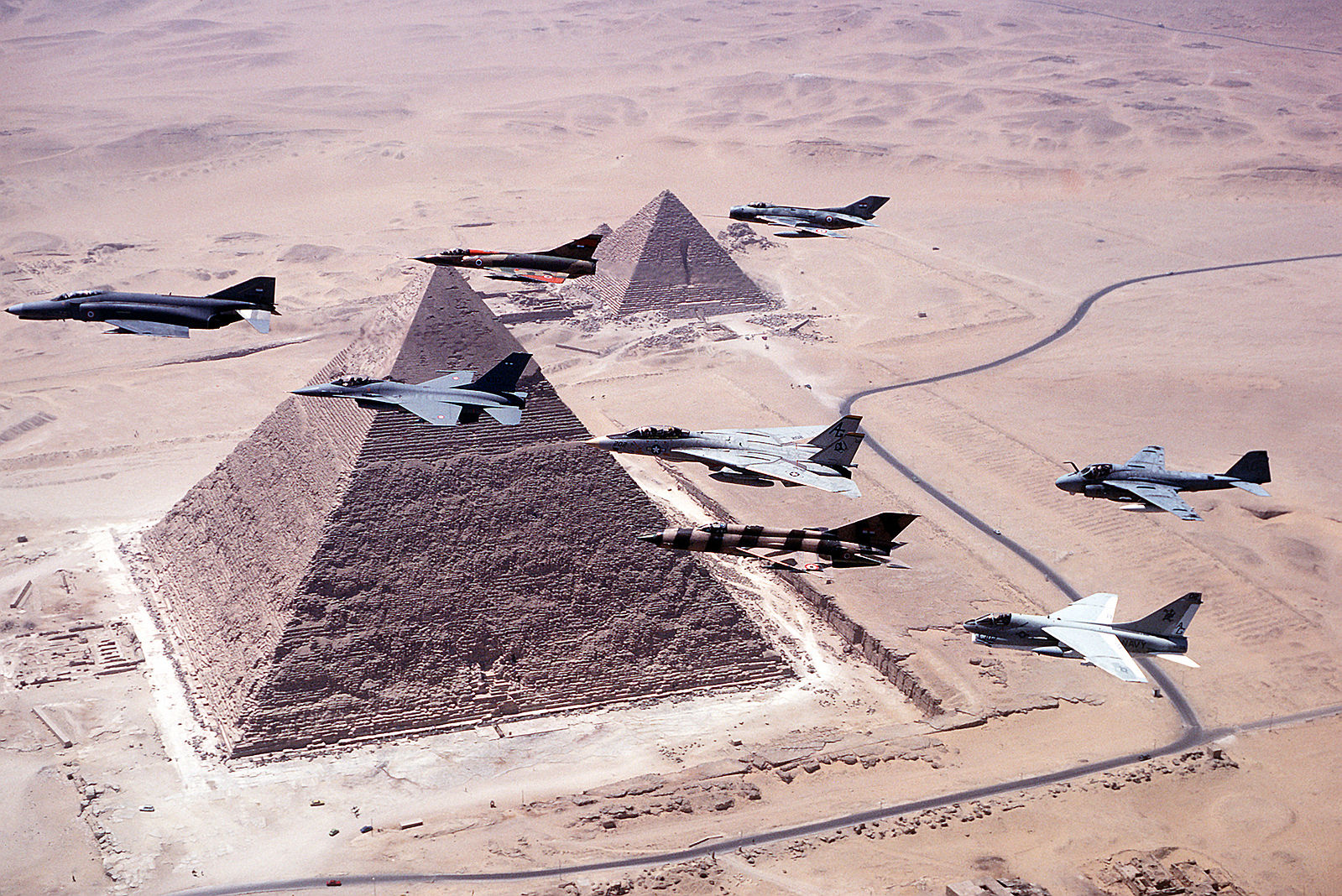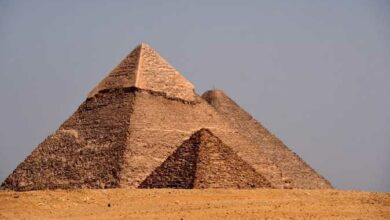
“Pyramids were power plants!” This is what we heard from Dr. Wassim al-Sisi while he was speaking to one of the Arab television channels. The original question was about who built the Egyptian pyramids. He defended the Egyptians and attacked those who say the Jews built the pyramids.
I myself am a fan of this man; he speaks in a beautiful and calm manner, he is a polite person, and I personally respect him and appreciate him. But when I hear him say that the pyramids were power plants, then it is my duty to respond, since this is my specialization and my field of study within Egyptian antiquities for more than half a century.
Here I would like to point out that this talk has no scientific evidence supporting it at all, but is a metaphor I hear many times from non-specialists who did not study this period of Egypt’s history.
So you find some people saying that the pyramids preserve technology, belong to the lost continent Atlantis, or were built by aliens who landed from space.
I have studied and discussed all these views in a scientific manner with real evidence, and I have not find any scientific studies to give credibility to these views. There is no linguistic or archaeological evidence indicating that pyramids were power plants.
So, to the reader and friend Dr. Wassim al-Sisi, I will explain the scientific evidence proving the pyramids had been built as tombs from the reign of King Djoser until King Ahmose of the 18th Dynasty, who built his pyramid in Abydos. After him, the kings of the New Kingdom of Egypt built their tombs in the Valley of the Kings, with the mountain representing the pyramid shape.
Parts of the King Djoser’s hand and foot were found inside his pyramid, which was Egypt’s first pyramid. Also discovered was the mummy of King Nefer-Ef-Ra of the Fifth Dynasty, who built his pyramid in southern Saqqara. In addition, the tombs of nobles and employees have been found around the pyramids, containing full mummies, as well as what was found in the Nefer’s tomb in Saqqara and another tomb belonging to the writer Kai, which was discovered west of the Khufu pyramid.
Their titles within these tombs indicate that they had many positions and were responsible for reviving the entombed king’s doctrine. If we read texts about the pyramids, which began during the reign of King Unas, the last king of the Fifth Dynasty, we find that they refer to the king being buried below the pyramid, with the pyramid serving as a ladder to ascend to the god Ra in heaven.
The second evidence is that around the pyramid there are fourteen architectural elements. Each element had a specific function to revive the doctrine of the deceased king through the priests who lived within the hierarchical city, offering rituals within the Valley Temple and the Mortuary Temple. The function of such temples was the worship of the king, the god Ra and the goddess Hathor. All these evidences proving the pyramid was only a graveyard have been found just around Khufu’s pyramid. At the same time, these archaeological evidences symbolize the strength and greatness of the deceased king. Therefore, if the pyramid was a power plant, why are all these linguistic and archaeological evidences around the pyramid?
There are also the papyrus discovered recently in Wadi al-Jarf, the oldest papyrus discovered, which contains within it lines stressing that the pyramid was just a tomb for the king. It is the only papyrus that talks about building the pyramid, about King Khufu, about managing the pyramid, and about transporting stones by boat from the Nile to the pyramid. If these pyramids were power plants, then where is the text that supports it? If the king built this as a power plant, then where is the king buried?
As for a response to the presence of more than one pyramid for a king, such as with King Sneferu, the first kings of the Fourth Dynasty, we find that he began the construction of his colossal pyramid in Maydum, but his architect Nefermaat found that Maydum did not have enough stones to build a huge pyramid. So this pyramid became a symbolic burial ground for the king, while his residence was transferred from Maydum to Dahshur, where he began to build the pyramid known as the Bent Pyramid. When the architect found that changing the angle might hinder the burial of the king if he died suddenly, he started constructing the Northern Pyramid, but Sneferu settled on being buried inside the Bent Pyramid and then returned to turn the Step Pyramid in Maydum into a full pyramid.
The fourth pyramid is in Seila, but it is not a pyramid; it is like the eternal hill from which God came out to create the world. Next to it, Sneferu built his palace, which he lived in when he had been building and supervising the collection of taxes.
I think that if we read the books on pyramids published by Mark Lehner, Rainer Stadelmann, Miroslav Verner and the author of these lines, we will never say that the Egyptian pyramids were power plants!
In my public lectures, I say that if anyone who is not a specialist comes and looks at the pyramids, he will have ideas and imaginations that have no basis. If he studies the evidences, he will know that the pyramids were the national project of Egypt and the Egyptians and that building the pyramid built Egypt.




